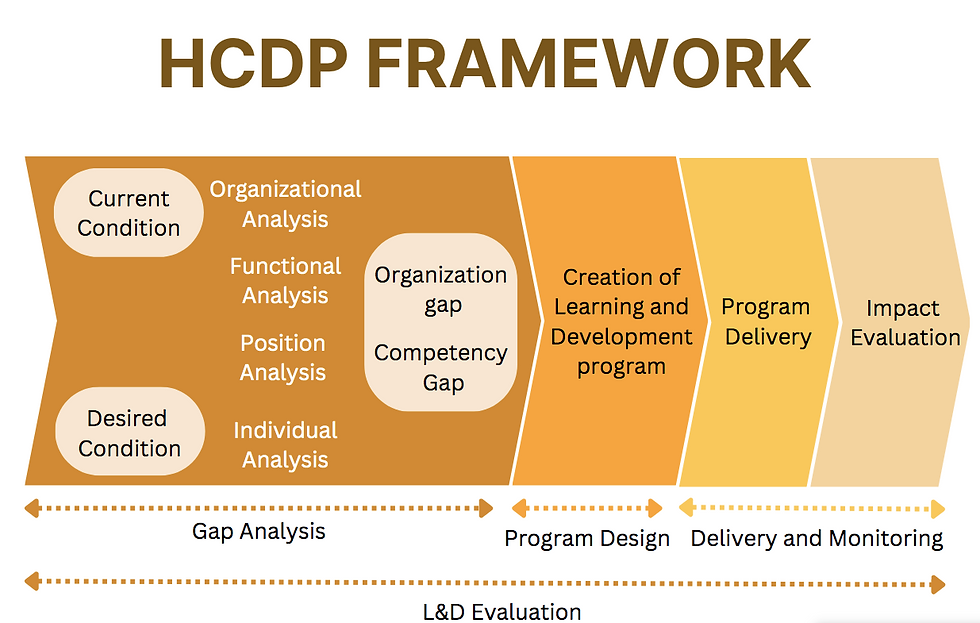Preparing for the Future: HCDP for Talent Development
- Oranye Troops

- Mar 6, 2023
- 2 min read
Updated: Apr 28, 2023

In an era of technological change and digital disruption, organizations must constantly adapt to remain competitive. A World Economic Forum report revealed that on average, companies estimate that around 40% of workers will require reskilling with the skills required for most jobs expected to undergo significant shifts by 2025. Upskilling and reskilling have become essential for maintaining a strong workforce.

The HCDP framework provides a structured approach to talent management that helps organizations assess their talent needs, develop strategies to address those needs, and evaluate the effectiveness of talent development initiatives.

In the HCDP framework, the first stage is gap analysis, which involves analyzing the current workforce and identifying skill gaps in comparison with the ideal condition. This information can be used to determine which talent needs should be addressed through the 3B model.
Sometimes, organization need the competency in the near quarter, however not all of competency can be developed instaneously. We suggest the 3B model (Build, Buy and Borrow). Organization can "Buy" competency through hiring the required competency for a high impact and competency as well as used in a indefinite time. Organization can "Borrow" competency through contracting talent from external source for temporary or project basis.

Three main components in designing a training and development program are Learning Objective (ouput), Training Method (Process), Training Resource (Input).

Measuring the training and development impact can be a challenge especially the direct effect of training and development to the bottom line. We believe that training evaluation should be carried to the input and the output of the program. Measuring input is carried through the analysis of alignment between the learning objective and Organizational needs, while output can be measured through Participant Reaction, Knowledge Transfer, Behaviour Shift, and Tangible Result.




Syarat ketentuan kabar4d